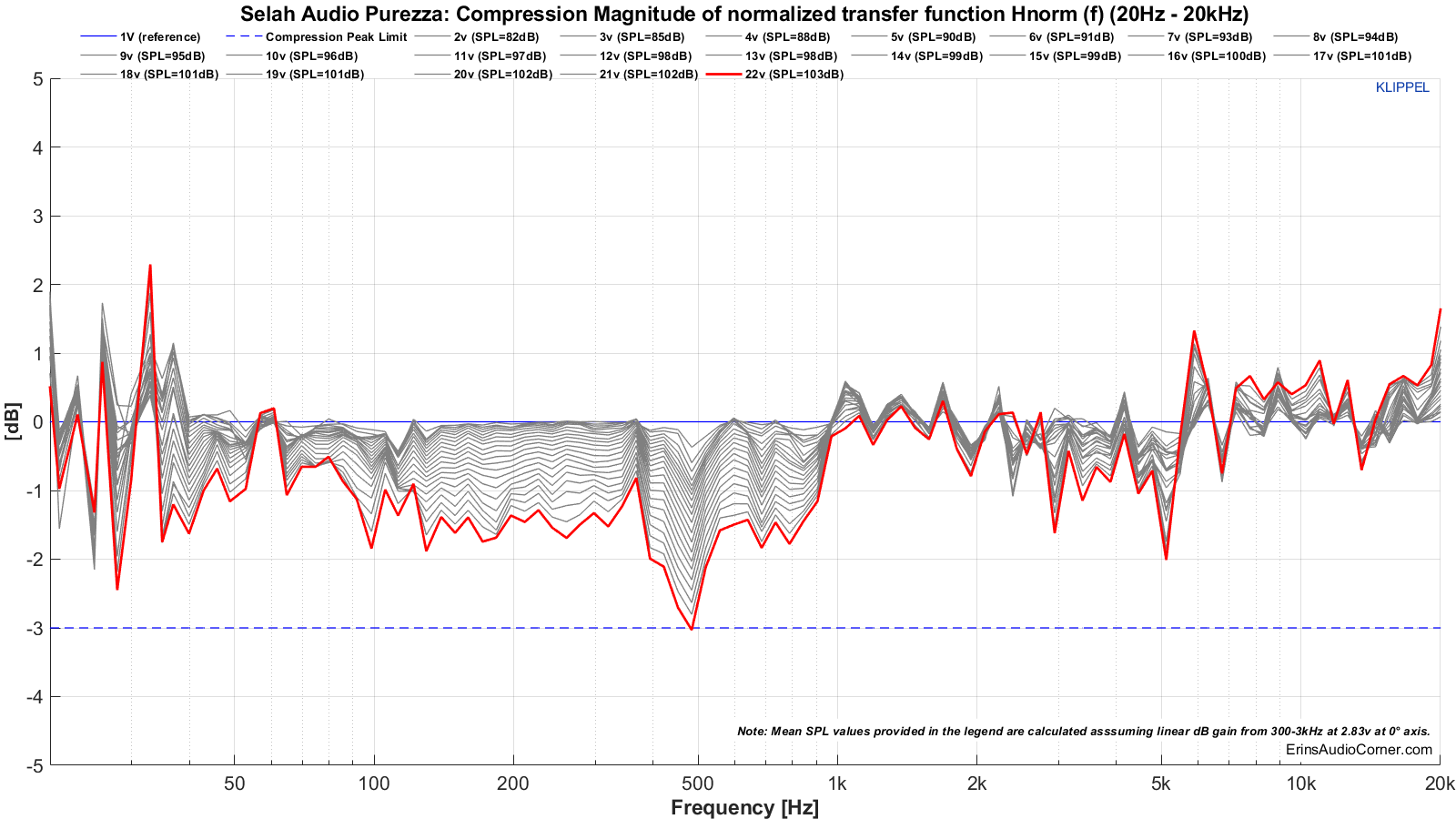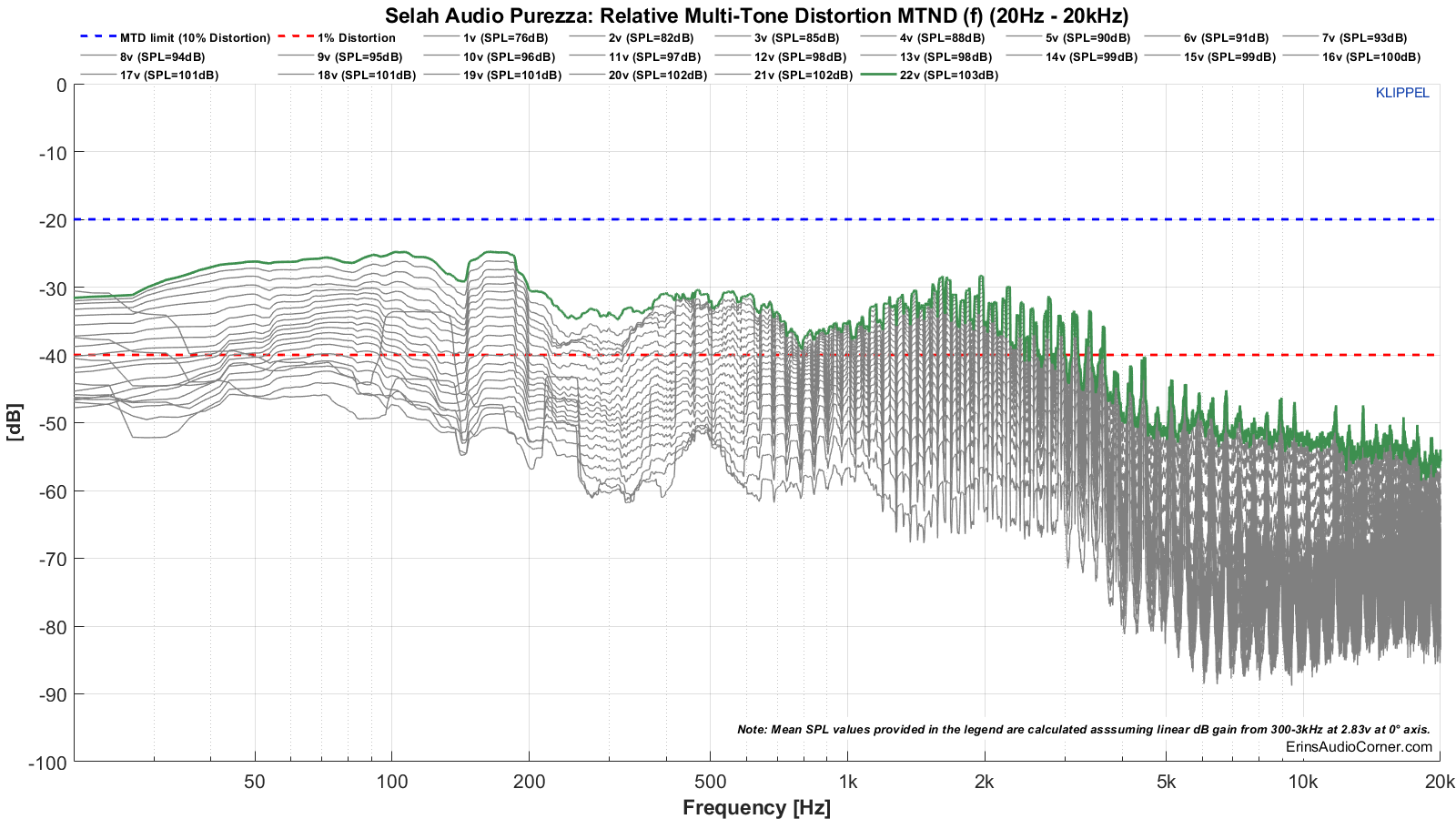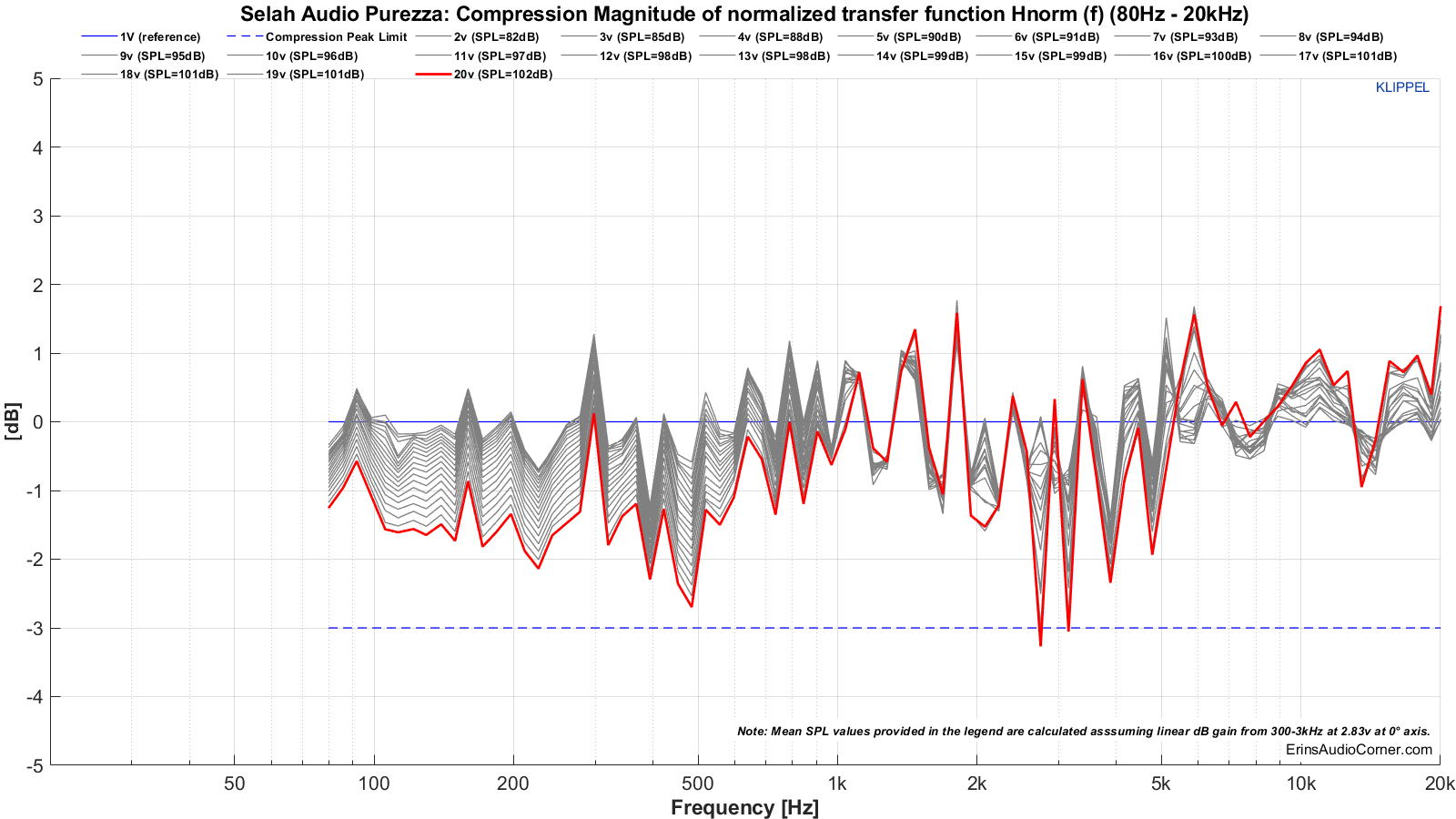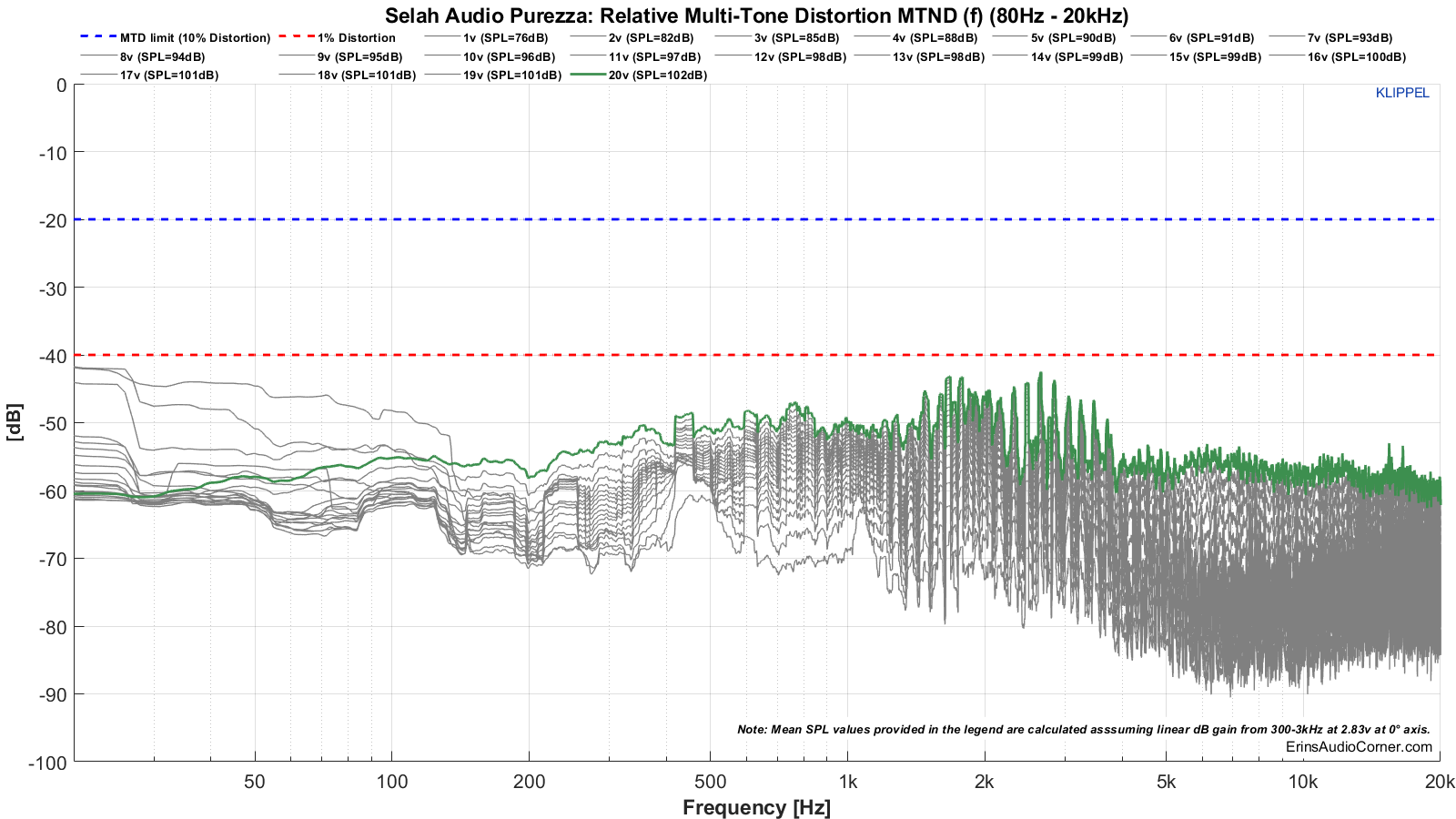2) Max SPL for loudspeakers.
I perform max SPL testing using Klippel's MTON module. It uses multitone signal with user-set thresholds of distortion AND compression.
I made a video demonstrating how this is done. TURN YOUR VOLUME DOWN.
Rather than regurgitate everything I do, here is a direct quote from my Selah Audio Purezza review:
https://www.erinsaudiocorner.com/loudspeakers/selah_audio_purezza/
I perform max SPL testing using Klippel's MTON module. It uses multitone signal with user-set thresholds of distortion AND compression.
I made a video demonstrating how this is done. TURN YOUR VOLUME DOWN.
Rather than regurgitate everything I do, here is a direct quote from my Selah Audio Purezza review:
https://www.erinsaudiocorner.com/loudspeakers/selah_audio_purezza/
Maximum Long Term SPL:
The below data provides the metrics for how Maximum Long Term SPL is determined. This measurement follows the IEC 60268-21 Long Term SPL protocol, per Klippel’s template, as such:
Each voltage test is 1 minute long (hence, the “Long Term” nomenclature).
- Rated maximum sound pressure according IEC 60268-21 §18.4
- Using broadband multi-tone stimulus according §8.4
- Stimulus time = 60 s Excitation time + Preloops according §18.4.1
The thresholds to determine the maximum SPL are:
- -20dB Distortion relative to the fundamental
- -3dB compression relative to the reference (1V) measurement
When the speaker has reached either or both of the above thresholds, the test is terminated and the SPL of the last test is the maximum SPL. In the below results I provide the summarized table as well as the data showing how/why this SPL was deemed to be the maximum.
This measurement is conducted twice:
The reason for the two measurements is because it is unfair to expect a small bookshelf speaker to extend low in frequency. Applying both will provide a good idea of the limitations if you were to want to run a speaker full range vs using one with a typical 80Hz HPF. And you will have a way to compare various speakers’ SPL limitations with each other. However, note: the 80Hz signal is a “brick wall” and does not emulate a typical 80Hz HPF slope of 24dB/octave. But… it’s close enough.
- First with a 20Hz to 20kHz multitone signal
- Second with a limited 80Hz to 20kHz signal
You can watch a demonstration of this testing via my YouTube channel:
Test 1: 20Hz to 20kHz
Multitone compression testing. The red line shows the final measurement where either distortion and/or compression failed. The voltage just before this is used to help determine the maximum SPL.

Multitone distortion testing. The dashed blue line represents the -20dB (10% distortion) threshold for failure. The dashed red line is for reference and shows the 1% distortion mark (but has no bearing on pass/fail). The green line shows the final measurement where either distortion and/or compression failed. The voltage just before this is used to help determine the maximum SPL.

Test 2: 80Hz to 20kHz
Multitone compression testing. The red line shows the final measurement where either distortion and/or compression failed. The voltage just before this is used to help determine the maximum SPL.

Multitone distortion testing. The dashed blue line represents the -20dB (10% distortion) threshold for failure. The dashed red line is for reference and shows the 1% distortion mark (but has no bearing on pass/fail). The green line shows the final measurement where either distortion and/or compression failed. The voltage just before this is used to help determine the maximum SPL.

The above data can be summed up by looking at the tables above but is provided here again:
Surprisingly, the max SPL test from 20Hz to 20kHz is higher than that of the 80Hz to 20kHz test. However, only 1dB different. A re-test yielded the same results.
- Max SPL for 20Hz to 20kHz is approximately 103dB @ 1 meter. The compression threshold was exceeded above this SPL.
- Max SPL for 80Hz to 20kHz is approximately 102dB @ 1 meter. The compression threshold was exceeded above this SPL.
Last edited:
